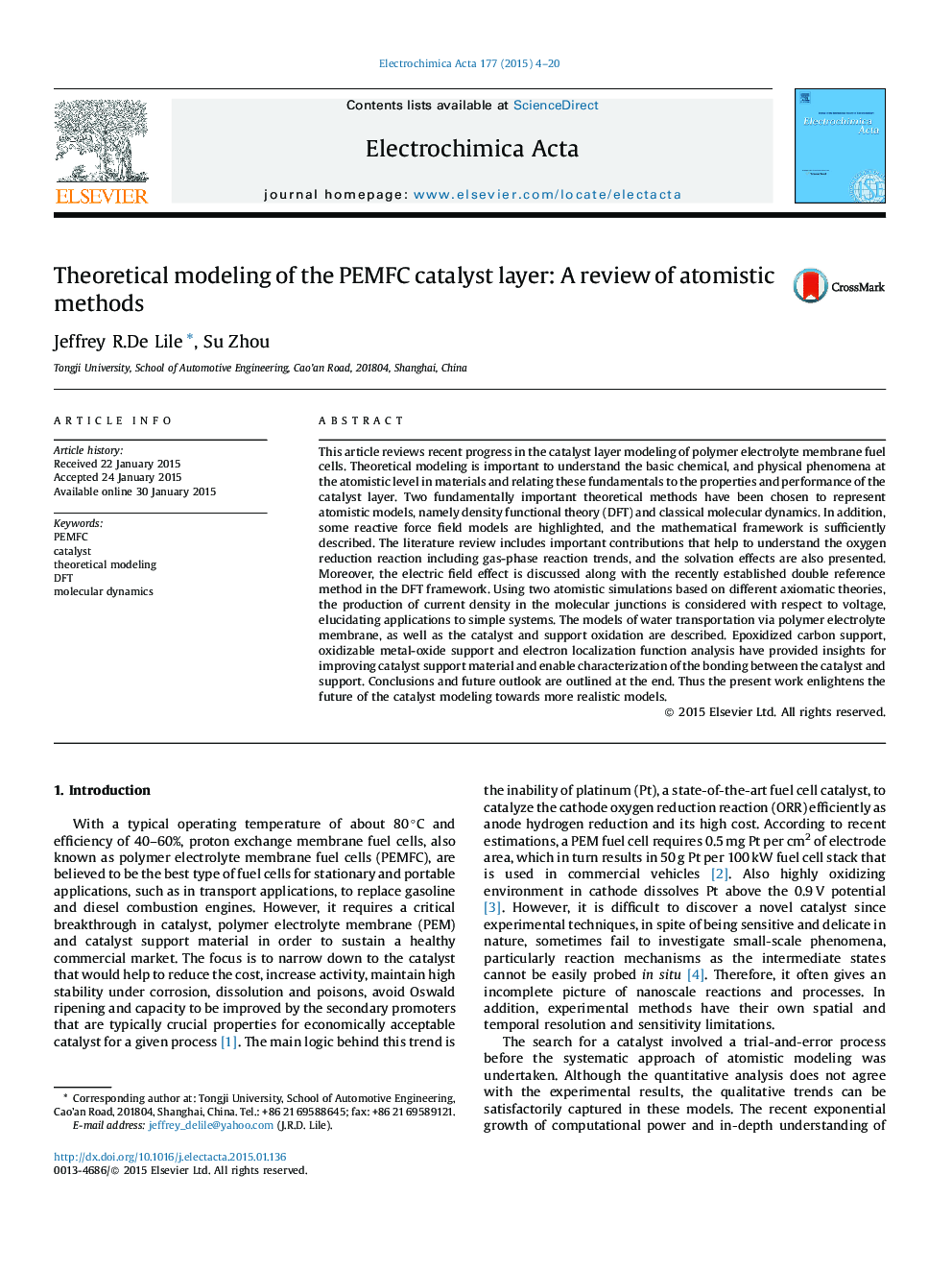| Article ID | Journal | Published Year | Pages | File Type |
|---|---|---|---|---|
| 183852 | Electrochimica Acta | 2015 | 17 Pages |
This article reviews recent progress in the catalyst layer modeling of polymer electrolyte membrane fuel cells. Theoretical modeling is important to understand the basic chemical, and physical phenomena at the atomistic level in materials and relating these fundamentals to the properties and performance of the catalyst layer. Two fundamentally important theoretical methods have been chosen to represent atomistic models, namely density functional theory (DFT) and classical molecular dynamics. In addition, some reactive force field models are highlighted, and the mathematical framework is sufficiently described. The literature review includes important contributions that help to understand the oxygen reduction reaction including gas-phase reaction trends, and the solvation effects are also presented. Moreover, the electric field effect is discussed along with the recently established double reference method in the DFT framework. Using two atomistic simulations based on different axiomatic theories, the production of current density in the molecular junctions is considered with respect to voltage, elucidating applications to simple systems. The models of water transportation via polymer electrolyte membrane, as well as the catalyst and support oxidation are described. Epoxidized carbon support, oxidizable metal-oxide support and electron localization function analysis have provided insights for improving catalyst support material and enable characterization of the bonding between the catalyst and support. Conclusions and future outlook are outlined at the end. Thus the present work enlightens the future of the catalyst modeling towards more realistic models.
